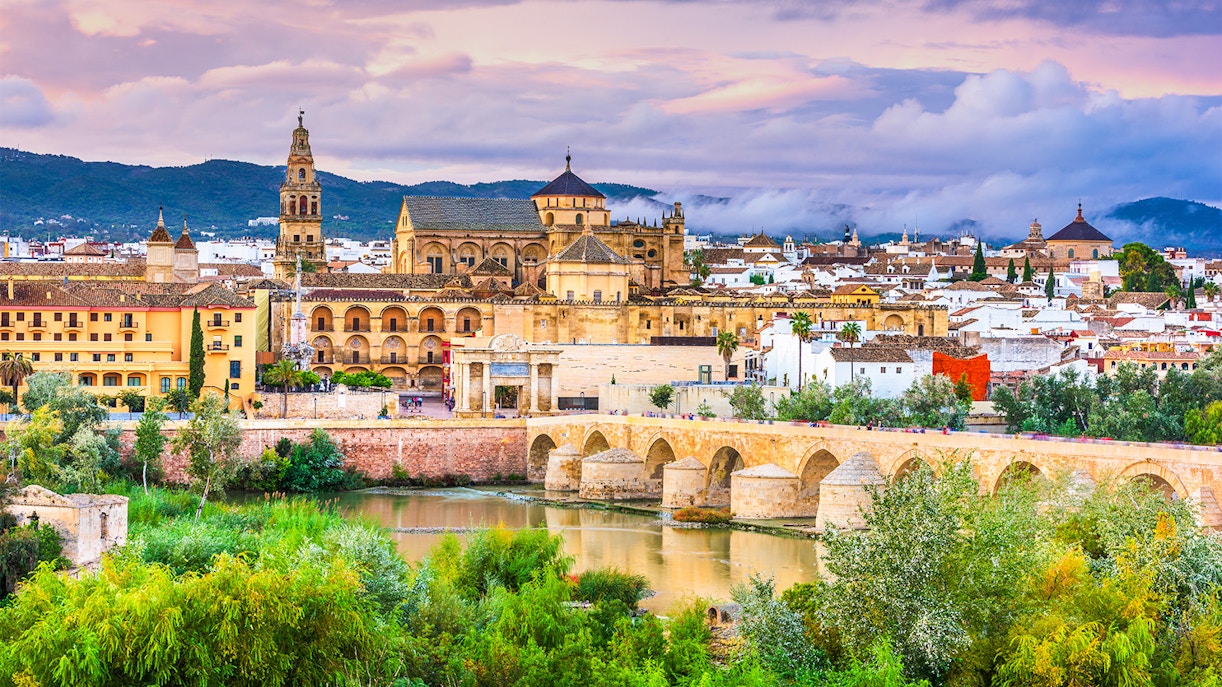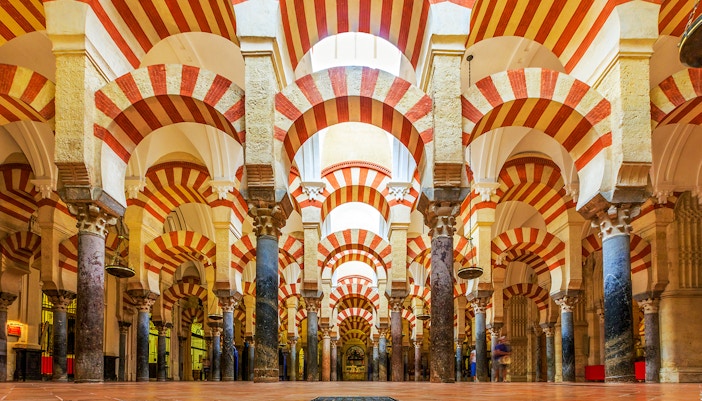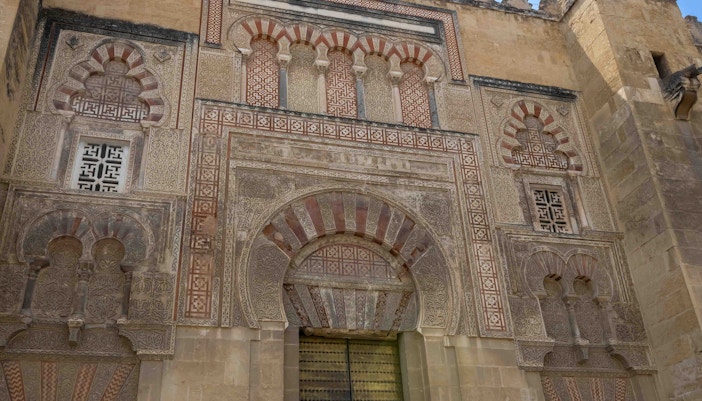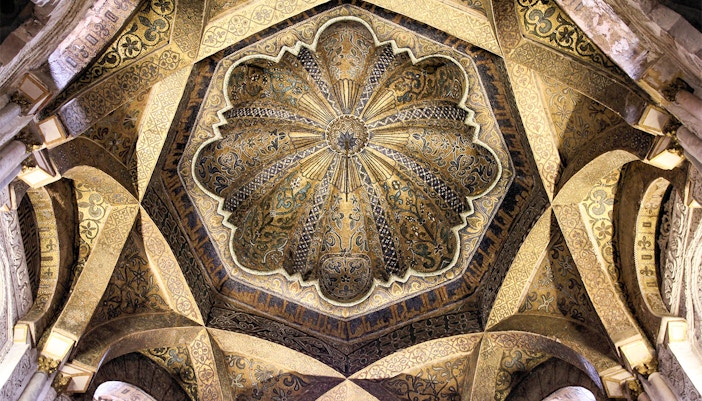The Cordoba Mosque's exterior has a fortified appearance, exhibiting a defensive design by using alternating headers and stretchers, a Roman construction method to strengthen walls. The exterior also features heavy buttressing and a crenellated roof, which give the impression of a secure stronghold, further contributing to its fortified look. These fortifications may have been influenced by the uprisings and intrigues faced during Umayyad rule in Cordoba.
The exterior of Mezquita Cordoba
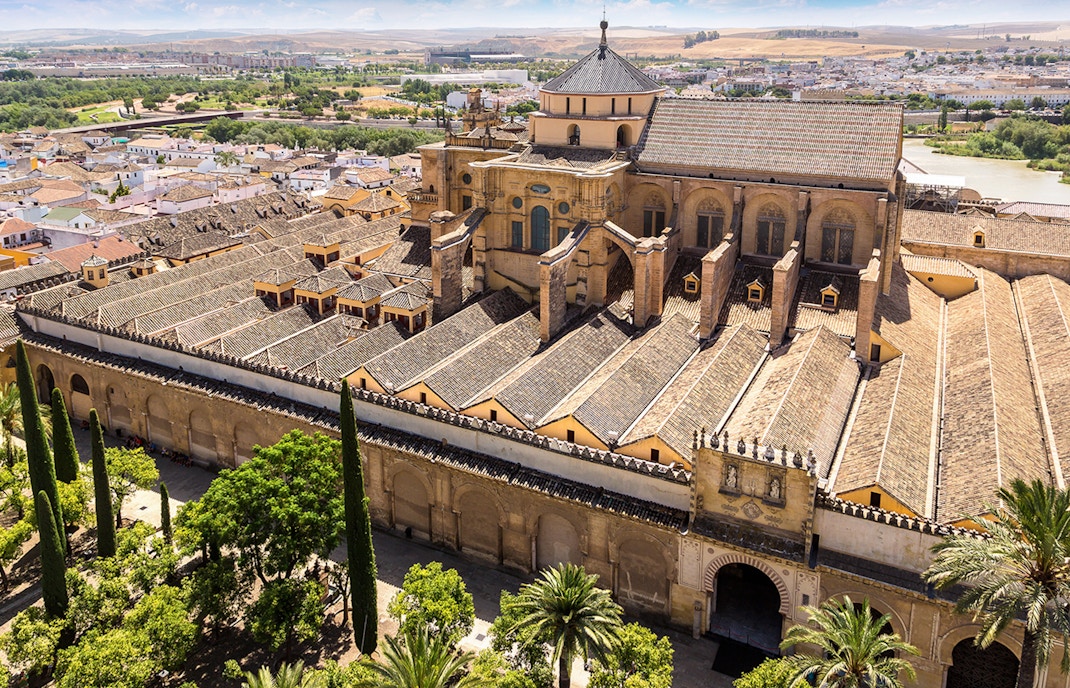
Fortified appearance
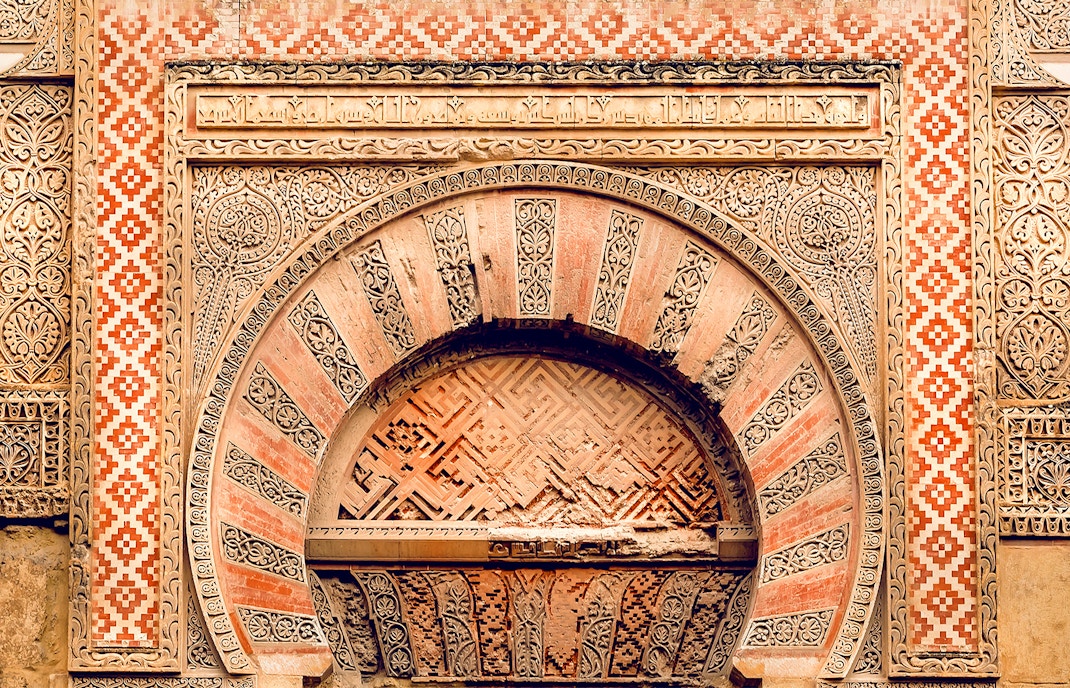
Decorated portals
The exterior of the Cordoba Mosque features elaborately decorated portals, including the Puerta de San Esteban, which is adorned with intricate carving and blind arcades. The portals showcase intricate Islamic geometric patterns, arabesques, and calligraphy. They are adorned with intricate detailing and serve as majestic entrances to the mosque, inviting visitors to experience the richness of Islamic art and architecture before stepping inside.
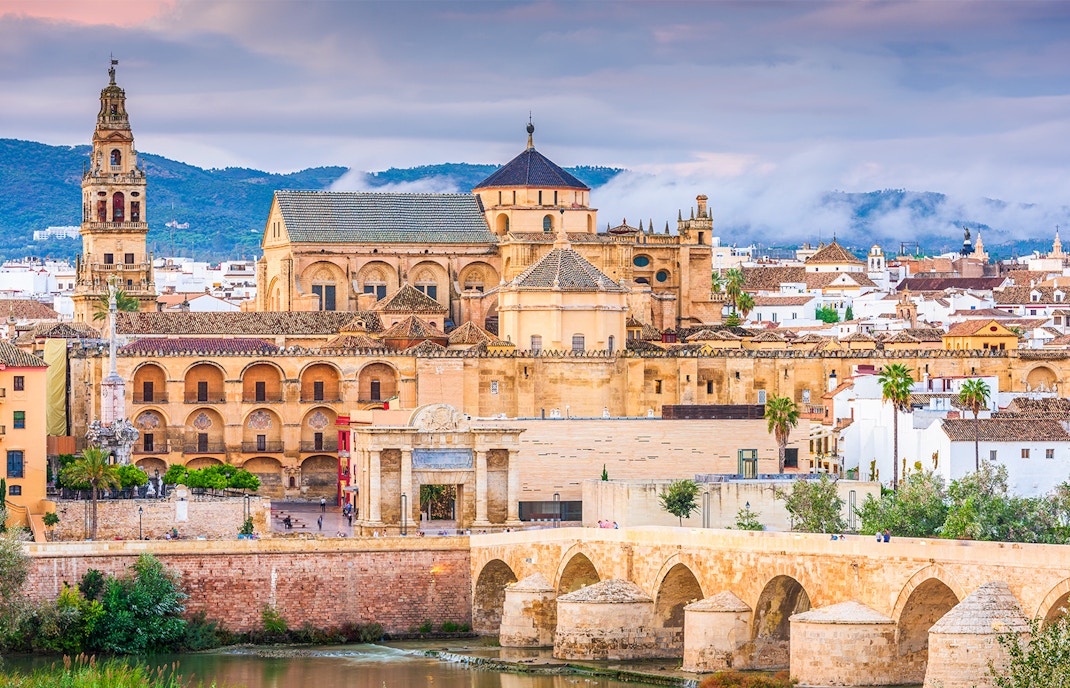
An architectural fusion
The architectural style of the Mezquita blends elements from various traditions, including Visigothic, Roman, and Persian, combined with Islamic calligraphy and geometric patterns. The use of multifoil arches and geometric patterns reflect the diverse cultural influences that shaped the mosque's design. The arched windows are decorated with pierced stonework shutters, while the Islamic prohibition on figurative images led to the creation of the intricate patterns.
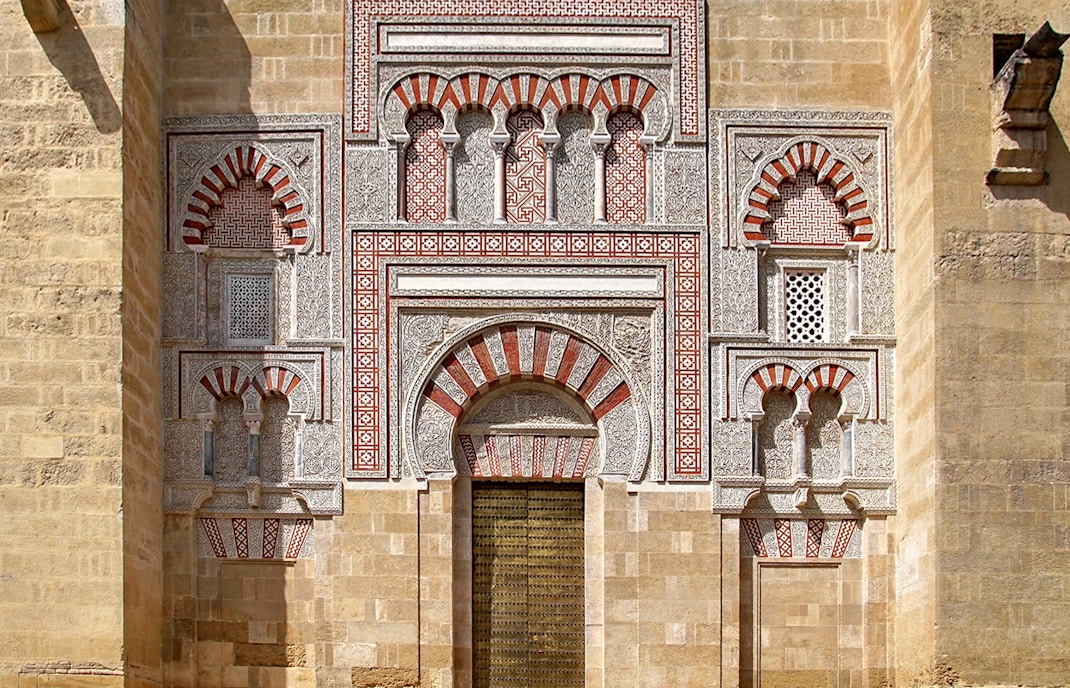
Materials
The mosque's exterior is crafted from a variety of materials, reflecting the architectural richness of the region. These include stone, brick, and stucco, which are intricately carved and embellished with decorative motifs. Additionally, the exterior features elements crafted from marble, granite, and limestone, adding to the monument's structural diversity and aesthetic beauty.
